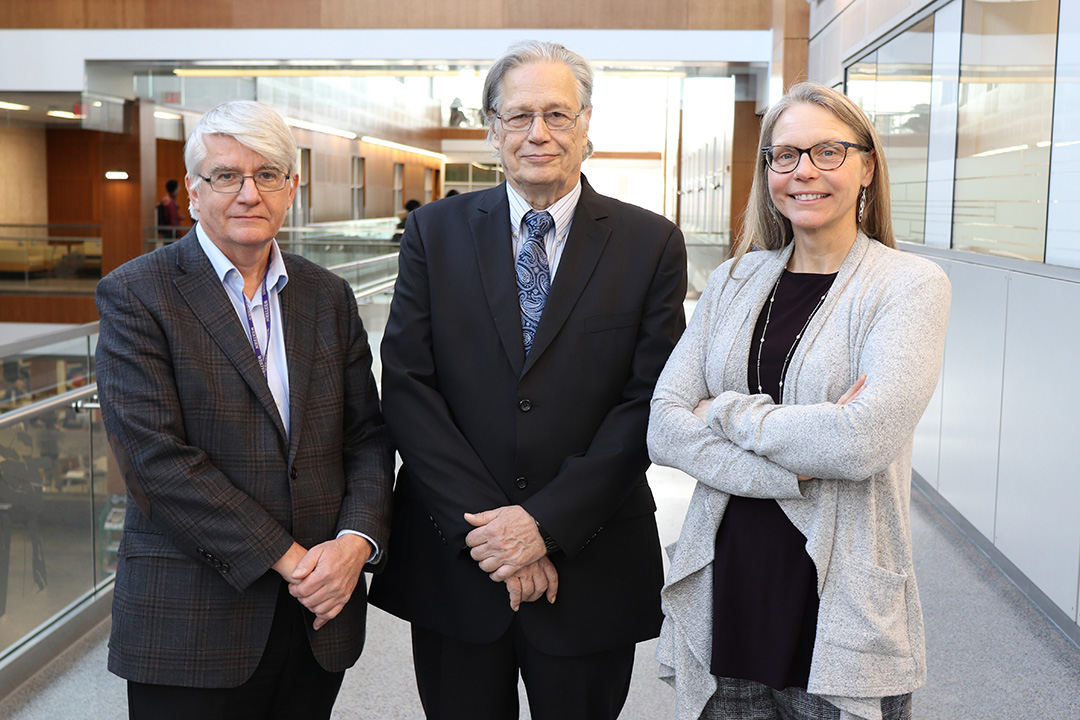
USask health researchers make ‘exceptional’ discovery
A discovery by a group of University of Saskatchewan (USask) researchers may change the way we model how a human body processes drugs.
By KRISTEN McEWENDr. Carl Wesolowski (MD) is leading an interdisciplinary research team that recently published an article about their five-year study of why it takes longer than expected for certain drugs, like metformin, to completely leave the body. Metformin is often used to treat Type-2 diabetes.
The study found that when metformin is delivered intravenously (IV), the drug builds up and stays in the body tissue for a lengthy period of time.
“It takes a long time for (metformin) to come out of the body because the tissues in the body are very greedy for the drug, and want to hold the drug back,” Wesolowski said.
Traditional modelling methods suggested that metformin had almost completely left the body 72 hours after the initial dose. But in reality, 21 per cent of the drug hasn’t left the body in that time frame, he said. Wesolowski created a new way to calculate and model the half-life of metformin—how long it takes the amount of drug to be reduced by 50 per cent. When researchers model drugs in the body, they figure out how long the drugs sticks around in the body, he explained.
Researchers are also interested in exploring metformin as an inexpensive anti-cancer drug, since diabetic patients who take the drug have significantly fewer cancers than people without diabetes.
“If you want to treat someone effectively, and the mechanism is somewhere in the body tissue, you have to build up the tissue levels quickly, if you want to treat something like cancer,” Wesolowski said.
With the understanding that the body is retaining part of the initial dose, you can give a large dose first and then smaller subsequent doses, due to the amount of the drug that remains in the body tissue from the initial dose, he explained.
This new model was profiled in the paper that was published and verified in the peer reviewed Journal of Pharmacokinetics and Pharmacodynamics. Dr. Geoffrey Tucker (DSc), a faculty member at the University of Sheffield in the United Kingdom, and well-known author of original work on metformin, gave the paper a rare “exceptional” rating in the pharmacology and drug discovery field.
Tucker wrote, “The article by Wesolowski et al. is a significant contribution to our understanding of the disposition of metformin, with implications for the use of ‘long-tailed models’ to explain ‘strange’ pharmacokinetic behaviour in general.”
Wesolowski led the interdisciplinary team comprised of Dr. Paul Babyn (MD) of the College of Medicine’s Department of Medical Imaging, Dr. Jane Alcorn (PhD), dean of the College of Pharmacy and Nutrition, and computational scientist Dr. Surajith Wanasundara (PhD).
“The impact of this paper could be quite broad,” Babyn said. “People have to understand the differences between the current approach and the one described in the paper … and to recognize that there is room for change in some of the modelling that has been done in this paper.”
Alcorn, who conducts cannabinoid research, said that this discovery is applicable when it comes to determining half-lives of cannabinoid products.
“This can be used for compounds with a long half-life,” Alcorn said. “Our ability to model those drugs with traditional methods is fraught with error. We can get better estimates for these long half-life drugs with this new model.”
Since the study with metformin applies to IV drugs, one of the next steps is to work on how to model the drug if it is taken orally. As well, there is a need to confirm that the predicted amount of drug leaving the body through urine matches with the actual measured amount.
“That’s the next problem we are working on,” Wesolowski said.

